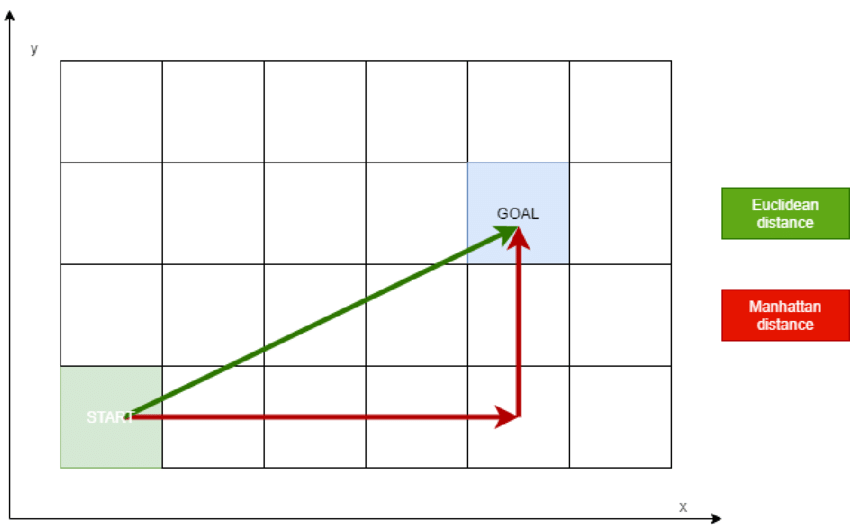Manhattan Distance

Manhattan distance, also known as taxicab or city block distance, is a crucial concept in mathematics and computer science. It measures the distance between two points in a grid-based system, considering only horizontal and vertical movements. Named after the grid-like layout of Manhattan streets, this distance metric has found extensive applications in various fields, from computational geometry to machine learning algorithms. In this article, we will delve into the intricacies of Manhattan distance, exploring its definition, properties, and real-world applications.
Understanding Manhattan Distance
Manhattan distance is defined as the sum of the absolute differences of the coordinates of two points. Mathematically, it is expressed as:
�(�,�)=∣�1−�1∣+∣�2−�2∣d(x,y)=∣x1−y1∣+∣x2−y2∣
Here, (�1,�2)(x1,x2) and (�1,�2)(y1,y2) represent the coordinates of two points in a two-dimensional space. The term “Manhattan distance” originates from the notion that it measures the shortest path a taxicab would take to travel between two points on the grid-like layout of Manhattan streets, where only horizontal and vertical movements are allowed.
Properties of Manhattan Distance
Symmetry
Manhattan distance between two points remains the same regardless of the order in which the points are considered.
Non-negativity
Manhattan distance is always non-negative.
Triangle Inequality
For any three points, the sum of the distances between any two points is always greater than or equal to the distance between the remaining two points.
Applications of Manhattan Distance
Computational Geometry
Manhattan distance is extensively used in computational geometry for solving problems like closest pair of points, clustering, and pathfinding algorithms.
Image Processing
It finds applications in image processing tasks such as object detection, image segmentation, and feature extraction.
Robotics and Motion Planning
Manhattan distance is vital in robotics for motion planning, robot navigation, and obstacle avoidance.
Machine Learning
In machine learning, Manhattan distance serves as a similarity measure for clustering algorithms like k-nearest neighbors KNN and hierarchical clustering.
Urban Planning
It is used in urban planning for analyzing traffic flow, determining optimal routes for transportation, and locating facilities efficiently.
Example
Consider two points �(2,3)A(2,3) and �(5,7)B(5,7). The Manhattan distance between these points would be:
�(�,�)=∣2−5∣+∣3−7∣=3+4=7d(A,B)=∣2−5∣+∣3−7∣=3+4=7
This indicates that the taxicab would need to travel a distance of 7 blocks to reach point B from point A.
Conclusion
Manhattan distance, with its simplicity and versatility, plays a pivotal role in various domains ranging from computational geometry to machine learning. Its grid-based approach makes it particularly suitable for problems involving discrete spaces and movements. By understanding the essence of Manhattan distance and its applications, one can leverage its power to solve a myriad of real-world problems efficiently, making it an indispensable tool in the toolkit of mathematicians, computer scientists, and practitioners across diverse fields.



